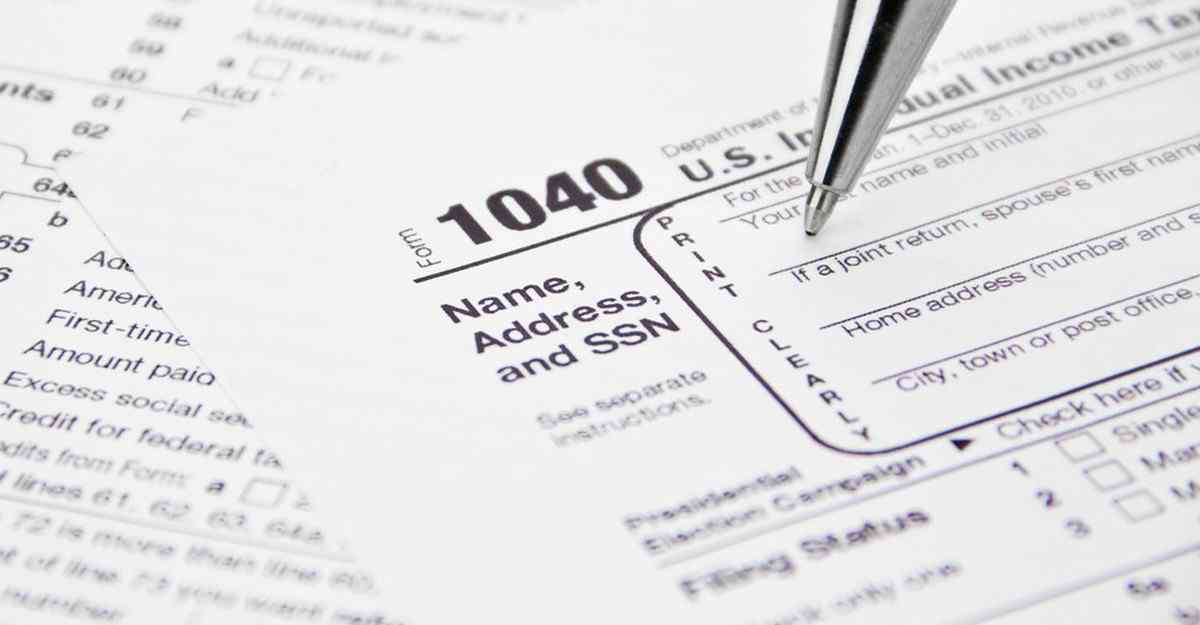What Are Passive Income Tax Rates?
Uncle Sam is always changing his mind about how much to tax passive income. To add to the confusion, the IRS treats passive income differently than any other type of payment.
In the US, there are three types of income subject to tax: passive income, earned income, and portfolio income. As with earned income, passive income is usually taxable, depending on factors discussed further in the article.

Earned Income Vs. Passive Income
There are two primary ways that a person can make money: through earned income, also known as active income, and through passive income.
Earned Income
Earned income is any income resulting from personal labor. This is usually done by trading a certain amount of time for money at a job. This income is taxed at ordinary tax rates.
Active income is usually the first and sometimes the only way people think of making money. It is undoubtedly the most common way to make money, and many would argue that it is also the easiest way to make money.
Passive Income
Passive income doesn't require active participation from the person. However, it doesn't mean that the person is uninvolved in the generation of the income. Any income earned without active work is referred to as passive income or unearned income. Examples include money made from real estate, partnerships, or investments.
It is taxed separately from the active income and will not be added or combined with the active income to compute a person's taxable income. Passive income will be taxed separately at ordinary tax rates or long-term capital gains tax rates, depending on the case.
How Is Passive Income Taxed?
There are two types of passive income tax rates in the US: ordinary tax rates and long-term capital gains tax rates. The tax system in the US is known as a progressive tax system. This means that those who earn more money see a higher portion of their earnings taxed.
As stated, passive income can be taxed at ordinary tax rates or long-term capital gains tax rates. It is taxed separately from the earned income. If a person has two sources of income, one passive and one active, they will not be added or combined.
A capital gain is a profit that you earn when you sell your asset or investment. For example, let say you bought a house for $100,000, and then you sell it for $130,000. The $30,000 would be your profit or also known as a capital gain.
A capital gain is an income that a person receives either from their passive income or from selling an investment, also referred to as investment income. It is the earned profit after selling an asset or investment. For example: if a person bought a house for $150,000 and then sold it for $200,000, the $50,000 would be the profit known as a capital gain.
Capital gains fall into two separate categories: short-term gains and long-term gains. Any investment or asset that is held for a year or under falls under short-term capital gains. They are taxed at their ordinary income tax rates that are typically taxed between 10% and 37%. Depending on the annual income of the person and the filing status, the tax rate might change. The tax rate of a single person filing is very different from someone who is married filing jointly.

Any investment held over a year falls under long-term capital gains and is taxed at a lower rate than their ordinary income tax. Any profit from the sale of the long-term asset is considered a long-term capital gain. The most popular example of long term capital gain is real estate. Long term gains have significant tax benefits. They are typically taxed between 0% and 20%. That is a huge difference compared to short-term capital gains. That's why it is best to hold an investment longer than a year to get better tax rates and pay less on taxes. If the investment falls under the 0% bracket, the person doesn't have to pay taxes.
Here is a table showing short-term capital tax rates for passive income.
|
Short-Term Capital Gains Tax Rates |
Single or Married Filing Separately |
Married Filing Jointly |
|
10%: |
$0 to $9,875 |
$0 to $19,750 |
|
12% |
$9,876 to $40,125 |
$19,751 to $80,250 |
|
22% |
$40,126 to $85,525 |
$80,251 to $171,050 |
|
24% |
$85,52 to $163,300 |
$171,051 to $326,600 |
|
32% |
$163,301 to $207,350 |
$326,601 to $414,700 |
|
35% |
$207,351 to $518,400 |
$414,701 to $622,050 |
|
37% |
$518,401 or more |
$622,051 or more |
Below is a table presenting long-term capital gains tax rates for passive income.
|
Long-Term Capital Gains Tax Rates |
Single or Married Filing Separately |
Married Filing Jointly |
|
0% |
$0 to $40,400 |
$0 to $80,800 |
|
15% |
$40,401 to $445,850 |
$80,801 to $501,600 |
|
20% |
$445,851 or more |
$501,601 or more |
To anyone wondering: "is passive income taxable?" the answer is yes and no.
Let's suppose a person's filing status is single, and they earned $30,000. They will be taxed on the lower end of the tax bracket, 10%, and 12%. Because the $30,000 belongs to the 12% category, some people wrongly assume that the entire amount will be taxed at 12%. However, this is not the case.
Here is how a $30,000 income is taxed correctly. The first $9,875 of the amount is taxed at 10%. Whatever is left from the amount, meaning that the remaining $20,125 will be taxed at 12%. After doing some calculations, a person who makes $30,000 pays around $4,210 in taxes.
If the same person who has made $30,000 holds their investment over a year, they will fall under the 0% bracket under long-term capital gains. It can pay to hold onto assets for a year.
Advantages and Disadvantages of Earned Income
Earned income is one of the most common ways that people generate revenue. Let's discuss its advantages and disadvantages.
Advantages
Compared to passive income, earned income generates revenue much quicker. Passive income usually takes time and money to get the structure running correctly to start developing a reliable and sustainable income stream.
At the start, the revenue of the earned income is usually larger compared to the passive income. To make a reliable and sustainable passive income stream, a person has to research and study the market to make it profitable.
Disadvantages
Getting an active income usually requires a lot of active labor. Employees must have a fixed work schedule and sometimes work long shifts.
Some active incomes may not be enough to cover the expenses of the worker. Some may feel that their salaries underestimate their needs.
Advantages and Disadvantages of Passive Income
After mentioning the pros and cons of earned income, let's discuss the benefits and downsides of passive income.
Advantages
Once a person properly sets up their passive income structure and gets it going, it often takes less working time to generate the same income level they would make with an active income stream. Those wishing to earn a reliable and sustainable income passively have to do a pretty good amount of research and work upfront to get the system going in the first place.
Having a passive income is incredibly good at helping escape the rat race. It is also excellent in generating income when someone has grown old and can no longer participate in active labor but still need money to survive.

Active income is incredibly scalable in comparison to active income. Therefore, it can help people achieve financial independence much faster than they would with just active income.
Disadvantages
Generating a sustainable passive income stream can be time-consuming, money consuming, and exhausting. To make a reliable and sustainable passive income stream, people have to spend a lot of time creating their product service. They also have to do research to make it profitable and advertise it to the right target audience. The process could take months to years. After getting the system going, it's good to remember that not all systems will last forever.
Suppose a person's only income source is passive income. In that case, they will not benefit from tax-deductible accounts such as a 401k, traditional IRA, health savings account (HSA), 457 B Plan, and standard deduction.
How to Generate Passive Income
There are multiple ways to generate passive income. Below are a few options that may work for anyone interested in making passive income.
Start a YouTube Channel
Starting a YouTube channel allows content creators to generate a passive income stream by letting ads run on their videos. When a viewer clicks on the ad, the YouTube content creator will get half of the money that the business paid to run the ads. Different channels on YouTube make different amounts of money per thousand views. On average, a video creator on YouTube can earn $5 per thousand views.
Sign Up for the Amazon Affiliate Program
People can get a little cut of Amazon's profits if they successfully recommend a product on Amazon to potential buyers. After signing up for the Amazon affiliate program, people will share their affiliate links with people they think might want to buy a specific product. For every product a customer purchases, the affiliate will earn around 4% to 8% of the sale price. The more products that prospects buy on Amazon, the higher that affiliate commission is.
Write a Book
Publishing a hard copy book or an e-book can generate a steady passive income stream. This requires self-promotion and marketing. When the product is out there, writers can earn royalties of around $5 per copy that is sold. This type of income is referred to as royalty income.
To publish a book, one may need to cover some production fees such as cover design, formatting, and more. This may cost a few hundred dollars. One might consider taking out short-term small-dollar loans such as a cash advance. The finance charge of a loan varies from the amount and the lender.
Start a Membership Website
Some websites charge a membership fee. To access the content, people have to subscribe to the website and pay a monthly payment. Depending on what the membership website is about and what it offers to its members, a person can charge different amounts.

The cheapest membership sites typically cost from $1 to $5 a month, whereas the most expensive ones cost a few hundred dollars a month. Membership websites are an excellent way to create a recurring revenue month after month.
Substack is a variation on the membership website. Instead of maintaining an entire website, content creators can send information directly to subscribers via a newsletter.
Invest in Real Estate
There are many ways that a person can invest in real estate, such as dividends from REITs, real estate ETF dividends, crowdfunded real estate, investing in mortgage notes, and rental property. If someone wants to generate passive income every month, investing in rental real estate might be the best option.
It falls into two main categories: residential rental property and commercial rental property. Within these two categories are different investment types that generate rental activity.
Also, there are two types of rentals: short-term rentals and long-term rentals. Regardless of the rental type, the gross income is earned the same way.
Rent Out a Room in Your House
If someone has an extra space in their house or a room that they don't need, they can rent out that room to generate passive income. This can be done on online rental marketplaces such as Airbnb or other platforms. People can charge anywhere between $25 a night to $200, depending on the location.
Create an Online Course
By creating online courses, people can sell their content either on their website or online learning and teaching marketplace like Udemy. If someone wants to publish their course on their website, they have to promote their content to drive traffic to generate sales. They can charge anywhere from $100 to $5,000 depending on the course's subject and how well they market it.
If someone chooses to work on an online learning and teaching website, the platform already comes with built-in customers. Creators can sell their courses on the website for around $10 to $100 and earn about 50% of the sales price. Each website has its terms and policies regarding commission and should be checked before working with a website.
Create a Lead Generation Website
Creating a lead generation website for a service business is a great way to generate passive income. Lead generation is acting as a middleman, helping get leads from publishers to buyers.
To do this successfully, people need to understand digital marketing to know how to drive traffic. A well-oiled lead generation process can be quite lucrative, but it does require regular maintenance.
How to Invest Earned Income for Tax Efficiency?
If a person generates earned income and passive income simultaneously, they can benefit from the best of both worlds. By holding a passive income for more than one year, a person may benefit from the 0% long-term capital gains tax rates depending on the amount and filing status. Also, a person can invest their earned income in four different ways to increase their tax efficiency.
401k
401k is a retirement account that employers create for their employees to contribute money and reduce the contributed amount from the total taxable income.
In 2020, employees under 50 years of age can contribute up to $19,500 yearly out of their salary into their 401k account. Whereas those above 50 years of age can contribute an extra $6,500 per year, making a total contribution of $26,000.
By contributing $19,500 or $26,000 into a 401k account the IRS will tax individuals as if they had $19,500 or $26,00 less taxable income.
However, it's good to keep in mind that even though people contributing to a retirement account aren't paying their taxes now, they will end up paying them later upon retirement.
The goal here is that by doing this, people will be able to lower their tax bracket by the time they retire. Upon retirement, they would end up paying less tax too.
Traditional IRA (Individual Retirement Account)
Similar to 401k, a traditional IRA is a retirement account that employers create for their employees to contribute money and reduce the contributed amount from the total taxable income.
In 2020, employees younger than 50 years can contribute up to $6,000 a year out of their salary into their account. Those older than 50 years can contribute an additional $1,000, making it $7,000.
Like 401k, employees will have to pay their taxes upon retirement at the age of 59.5.
HSA (Health Savings Account)
Employees who want to qualify for an HSA need to have a high deductible insurance plan, meaning a minimum annual deductible of $1,350 for individuals and $2,700 for families. The plan must also have a yearly limit on out of pocket expenses, and they cannot be more than $6,750 for individuals and $14,500 for families.
Individuals under 50 years of age can contribute a yearly amount of up to $3,550. Those older than 50 can contribute an additional $1,000. Families can also contribute $7,100 yearly. HSA is entirely tax-free, meaning that employees don't have to pay back anything upon retirement.
HSA is specifically designed to cover direct medical expenses. In case the full amount wasn't spent, it can roll-over into the following year.
When summing up the money contributed to the three accounts, as mentioned earlier, in one year, employees under 50 years of age will have reduced $29,050 from the total tax-deductible income. Employees over 50 years of age will have decreased 37,550 from the total tax-deductible income.
Standard Deduction
Any employee is eligible for a standard deduction, regardless of their employer. The federal standard deduction for single filers is $12,000, and for those who are married, the standard deduction is $24,000.

When adding up the standard deduction to the sum calculated above, a single person under 50 years of age would have reduced their total tax-deductible income by $41,050. In contrast, a married person under 50 years of age would have decreased $53,050.
A single employee over 50 years of age would have decreased $49,550, whereas a married employee would have cut down $61,550. This way, employees can potentially save around $10,000 depending on their tax bracket.
Talk to Your Tax Advisor
A person's passive income taxes are heavily dependent on the state that they live in, their income, marital status, and of course, tax bracket. That's why, before making any financial decision, it best to talk with a tax consultant to meet your financial goals.





